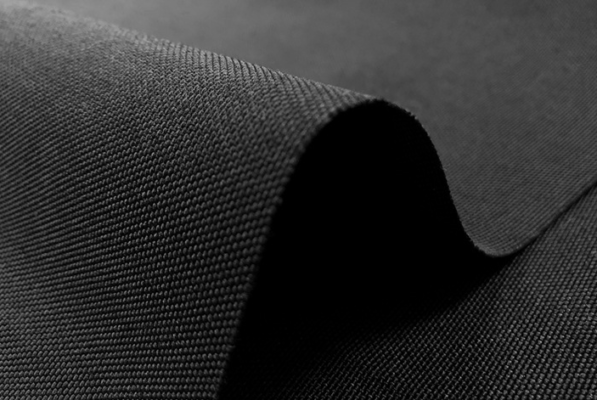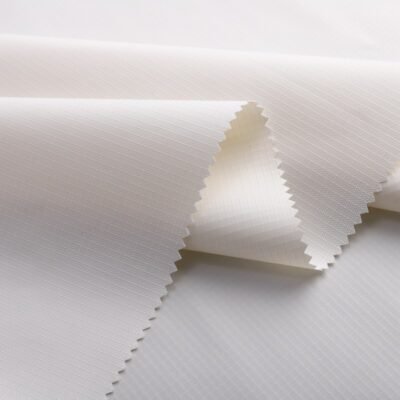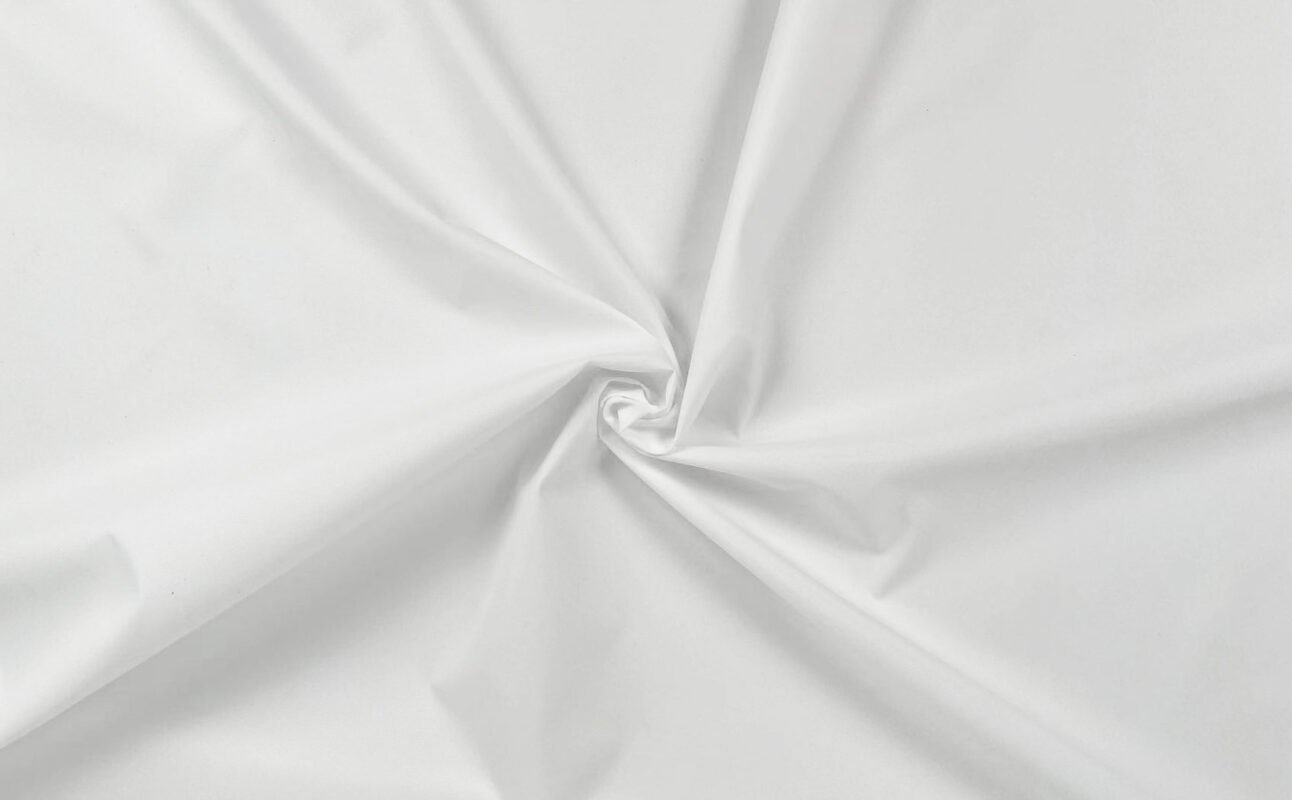Conocimiento
Selection of polyester and nylon fabrics for feather flags
Introducción
The Versatile World of Feather Flags
In the dynamic realm of advertising and promotional tools, feather flags stand out as both eye-catching and effective.
These fluttering banners, often seen gracing outdoor events, storefronts, and trade shows, are not just a means to display messages or logos; they are a canvas where material choice significantly influences their impact and longevity.
Among the plethora of fabric options, polyester and nylon have emerged as frontrunners, each bringing unique qualities to the table.

Polyester and Nylon: A Tale of Two Fabrics
Polyester, a synthetic fabric, is revered for its durability, ease of maintenance, and affordability. Its ability to withstand various weather conditions makes it a staple in the outdoor advertising world.
On the other hand, nylon, also synthetic, boasts superior strength and flexibility. Its high-quality sheen and ability to hold vibrant colors give it an edge in visual appeal.
However, the choice between polyester and nylon isn’t just a matter of aesthetics; it encompasses factors like location, weather resistance, and purpose of use.
Setting the Stage for Comparison
As we delve deeper into the world of feather flags, it becomes evident that the fabric is more than just a background material; it is the heart and soul of the flag’s performance and presentation.
Understanding the nuanced differences between polyester and nylon will guide us in making informed decisions for our specific advertising needs.
This blog post aims to explore these fabrics in detail, compare their properties, and ultimately help you select the right material for your feather flags.
| Property | Polyester Fabric | Nylon Fabric |
|---|---|---|
| Fortaleza | 4~7 cN/dtex | 7~9.5 g/d |
| Tear Resistance | Bien | Very Good |
| Abrasion Resistance | Promedio | Excelente |
| Hand Feel | Stiff | Soft |
| Color | Vivid Colors | Rich Colors, slightly less stable |
| Color Fastness | Excellent light and wash fastness | Slightly inferior color fastness |
| Costo | Economical | Slightly expensive |
| Moisture Absorption | Low | Alto |
| Melting Point | 255°C | 220°C |
| Density | 1.38~1.40 g/cm³ | 1.14 g/cm³ |
| Resistance to Photolysis | Strong | Slightly weaker |
| Chemical Resistance | Acid resistant but not alkali resistant | Alkali resistant, slightly less acid resistant |
| Impacto medioambiental | Recyclable | Recyclable |
Polyester Fabrics for Feather Flags
Unveiling Polyester: A Synthesis of Durability and Practicality
Polyester is a synthetic fiber made by chemical polycondensation of organic dibasic acids and diols, which is a type of polymer compound. Its invention dates back to the 1930s, and today it is one of the most important of the synthetic fibers.
Polyester fiber has many advantages. First of all, it has excellent wrinkle resistance and shape retention, so that clothing made from it does not wrinkle easily during wear and retains its original shape. Secondly, polyester fibers have high strength and elastic recovery, making woven fabrics strong and durable, as well as being able to quickly return to their original shape. In addition, polyester fibers are resistant to abrasion and non-sticky lint, making the fabrics look neater and cleaner.
The Enduring Qualities of Polyester
El principal atractivo del poliéster reside en su excepcional durabilidad. Diseñado para resistir estiramientos, encogimientos y abrasiones, mantiene su estructura en diversas condiciones climáticas. Esta resiliencia es primordial para las banderas de plumas, que a menudo se enfrentan a la peor parte de los elementos exteriores. La resistencia del tejido a las arrugas y la facilidad para volver a su forma original después de doblarlo o arrugarlo lo hace ideal para un uso repetido, un escenario común en eventos promocionales.
Retención de color y vitalidad
Another significant advantage of polyester is its impressive color retention. The dye bonds deeply with the fibers, allowing the fabric to maintain its vibrancy over time, even under consistent exposure to sunlight. This quality is critical for feather flags, as the brightness and clarity of their colors directly impact their visibility and effectiveness as advertising tools.
Types of Polyester in Feather Flags
Polyester for feather flags is not a monolith; it comes in various types, each serving specific purposes. The most commonly used varieties include:
- Knitted Polyester: Renowned for its flexibility and light weight, knitted polyester allows the flag to flutter gracefully in the wind, capturing attention with its dynamic movement.
- Spun Polyester: This type is lauded for its cloth-like feel and increased durability. Spun polyester is often chosen for locations with higher wind speeds, where extra resilience is needed.
- Oxford Polyester: Known for its heavier and more textured feel, Oxford polyester is a go-to choice for double-sided feather flags, offering a balance between weight and wind permeability.
Maintenance and Longevity
Maintaining polyester feather flags is relatively straightforward, adding to their appeal. They can be machine washed in cold water and laid flat or hung to dry. Avoiding harsh detergents and bleaches will prolong their life, preserving the fabric’s integrity and color. Moreover, polyester’s quick-drying nature means the flags can be back in use swiftly, an essential factor for time-sensitive events.
Nylon Fabrics for Feather Flags

Nylon: The Fusion of Strength and Aesthetics
El nailon representa una amplia categoría de polímeros sintéticos, conocidos como poliamidas, caracterizados por enlaces amida que conectan unidades recurrentes. El nailon, que exhibe una calidad brillante similar a la seda, es un termoplástico derivado predominantemente del petróleo. Posee la versatilidad de fundirse y reformarse en una amplia gama de productos que incluyen fibras, láminas y formas complejas. La adaptabilidad de los polímeros de nailon mejora aún más cuando se mezclan con una amplia gama de aditivos, lo que permite una variedad de modificaciones de propiedades.
La fuerza detrás del brillo
Nylon’s most notable attribute is its impressive tensile strength. It can withstand significant stress without losing its shape, a critical feature for feather flags that need to endure fluctuating wind conditions. This resilience ensures that the flags remain intact and functional over extended periods, even in challenging environments.
Exceptional Color Depth and Luminosity
Where nylon truly shines is in its ability to showcase colors with a distinct sheen and depth. Nylon flags exhibit a lustrous quality that enhances the visual impact of the printed designs. The fabric’s capability to hold and radiate vibrant colors makes it ideal for creating eye-catching and memorable promotional materials.
Care and Durability
Nylon feather flags require careful maintenance to preserve their quality. Hand washing in cold water with mild detergents is recommended to prevent damage. Avoiding prolonged exposure to direct sunlight can also extend the life of the fabric, as nylon can be more prone to UV degradation compared to polyester. Quick-drying and resilient, nylon flags can be back in action quickly after cleaning.
Comparing Polyester and Nylon
Durability Showdown: Polyester vs. Nylon
When it comes to selecting the right fabric for feather flags, understanding the durability of polyester and nylon is crucial. Polyester, known for its robustness, excels in resisting stretching and shrinking, making it ideal for long-term outdoor usage. It maintains its shape and structure even in challenging weather conditions. Nylon, on the other hand, boasts superior tensile strength. This makes it more suitable for environments with high winds, where flexibility and resistance to tearing are paramount.
Colorfastness and Print Quality
La batalla por la retención del color y la calidad de impresión entre estos dos tejidos está reñida. El poliéster, con su excelente solidez del color, garantiza que los colores permanezcan brillantes y no se desvanezcan fácilmente con el tiempo, incluso con una exposición constante a la luz solar. El nailon, con su brillo inherente, proporciona una calidad de alta definición a los gráficos impresos. Su capacidad para hacer que los colores parezcan más vibrantes y visualmente impactantes le da una ventaja en escenarios donde atraer la atención inmediata es clave.
Resistencia a la intemperie: un factor crítico
Tanto el poliéster como el nailon ofrecen una resistencia a la intemperie encomiable, pero sus rendimientos difieren ligeramente en diversas condiciones. La naturaleza resistente al agua del poliéster lo hace menos susceptible al moho y la humedad, una ventaja en climas lluviosos o húmedos. El nailon, si bien también es resistente a la intemperie, puede absorber más humedad y tardar más en secarse, lo que podría provocar problemas en entornos constantemente húmedos.
Rentabilidad y longevidad
La rentabilidad de un tejido suele ser un factor decisivo. El poliéster generalmente tiene un precio más bajo, lo que ofrece una opción económica sin comprometer la calidad y la durabilidad. El nailon, normalmente más caro, justifica su coste por su resistencia y atractivo estético superior. En términos de longevidad, ambos materiales son comparables y un mantenimiento adecuado desempeña un papel crucial para prolongar su vida útil.
Selecting the Right Fabric for Your Needs
Adaptando su elección a condiciones específicas
La elección entre poliéster y nailon para su bandera de plumas depende de una variedad de factores. No se trata sólo de preferencias estéticas, sino de adaptar el tejido a las condiciones y requisitos específicos de su caso de uso.
Teniendo en cuenta la ubicación y el clima
- Exterior versus interior: Para ambientes al aire libre, particularmente aquellos expuestos a condiciones climáticas adversas, la resistencia del poliéster a los elementos lo convierte en una opción favorable. Por el contrario, para eventos en interiores o entornos al aire libre menos exigentes, el atractivo visual y la flexibilidad del nailon pueden resultar más ventajosos.
- Condiciones climáticas: En áreas con mucha humedad o lluvia frecuente, las propiedades de secado rápido y resistencia al moho del poliéster son beneficiosas. El nailon, aunque también es resistente a la intemperie, es más adecuado para condiciones secas debido a su tendencia a absorber la humedad.
Frecuencia de uso y longevidad
- Uso regular versus uso ocasional: Si su bandera de plumas se utilizará con frecuencia y se someterá a un desgaste regular, la durabilidad del poliéster la convierte en una opción sensata. El nailon, aunque resistente, es más adecuado para uso ocasional o en situaciones en las que el impacto visual de la bandera es más crítico.
- Consideraciones de mantenimiento: La facilidad de cuidado y la resistencia al lavado frecuente del poliéster lo hacen ideal para banderas que necesitan una limpieza regular. Las banderas de nailon, que requieren un manejo más delicado, son preferibles en entornos donde no requieren un mantenimiento constante.
Personalización y restricciones presupuestarias
- Necesidades de impresión: If your design involves vibrant colors and detailed graphics, nylon’s sheen and color depth might be more appealing. However, polyester still offers excellent print quality and color retention for most needs.
- Cost Considerations: Polyester’s cost-effectiveness is an attractive feature for budget-conscious buyers, especially for large-scale or multiple flag projects. Nylon, while more expensive, offers a premium look and feel, justifying its price for high-impact branding needs.
Conclusión
Synthesizing the Fabric Selection Journey
As we conclude our exploration into the world of polyester and nylon fabrics for feather flags, it’s evident that each material offers distinct advantages tailored to different needs and conditions. Polyester, with its unmatched durability, cost-effectiveness, and ease of maintenance, stands as a reliable choice for frequent outdoor use, especially in challenging weather. Nylon, with its strength, superior sheen, and vibrant color presentation, excels in creating visually striking displays for high-impact advertising.
Making an Informed Decision
The decision between polyester and nylon should be informed by a careful consideration of your specific advertising goals, environmental conditions, and budget constraints. Whether you prioritize longevity, aesthetic appeal, or cost-effectiveness, both fabrics present viable options with their unique strengths.
Embracing Quality in Advertising
Selecting the right fabric for your feather flags is more than a practical decision; it’s a commitment to quality and effectiveness in your advertising efforts. By choosing the material that best aligns with your brand’s message and the flag’s intended use, you ensure that your promotional tool not only attracts attention but also withstands the test of time and elements.
Al embarcarse en su próxima aventura publicitaria, recuerde que la tela adecuada puede hacer que su bandera de plumas pase de ser un mero artículo promocional a convertirse en un símbolo duradero y llamativo del compromiso de su marca con la calidad y el impacto.
